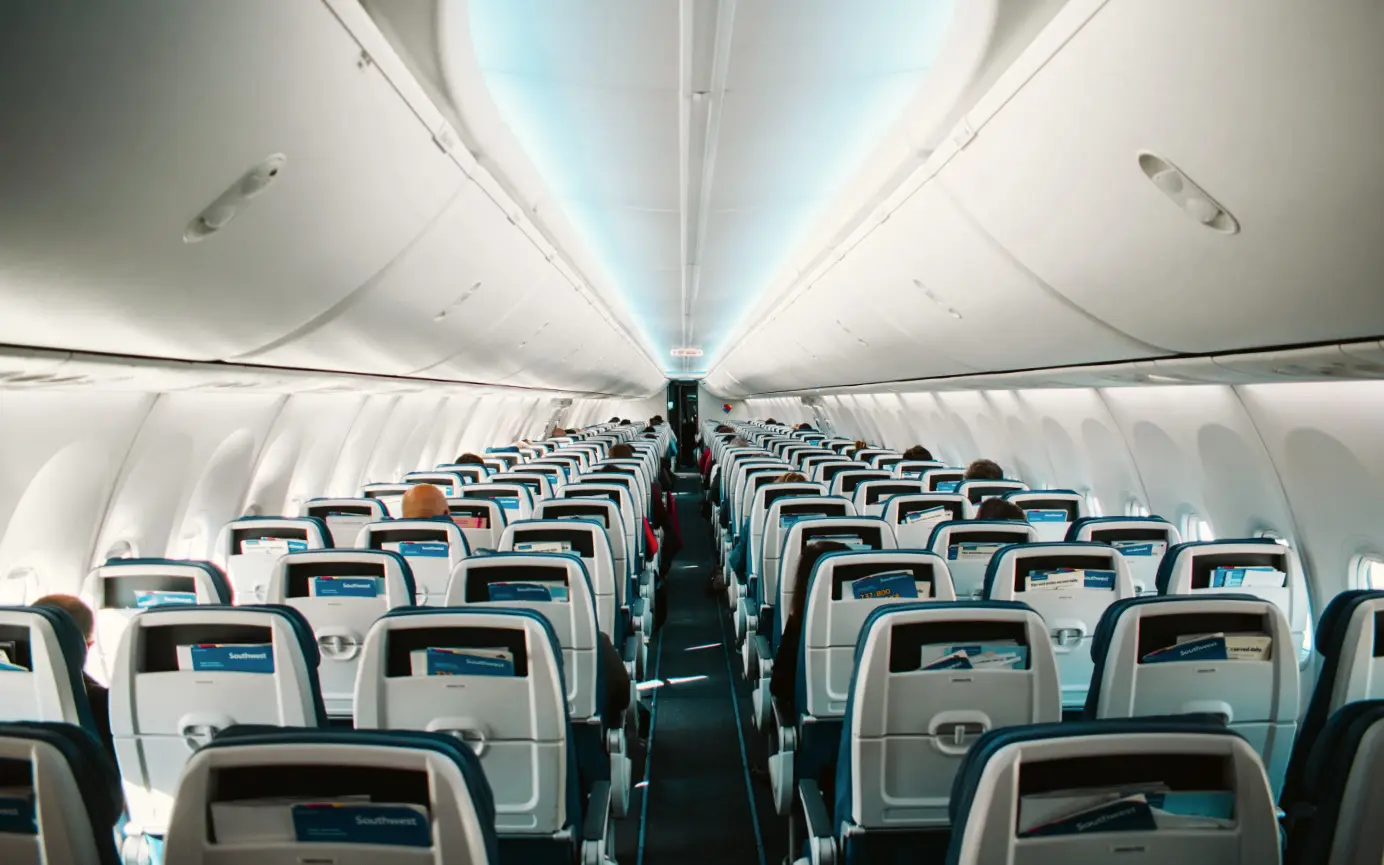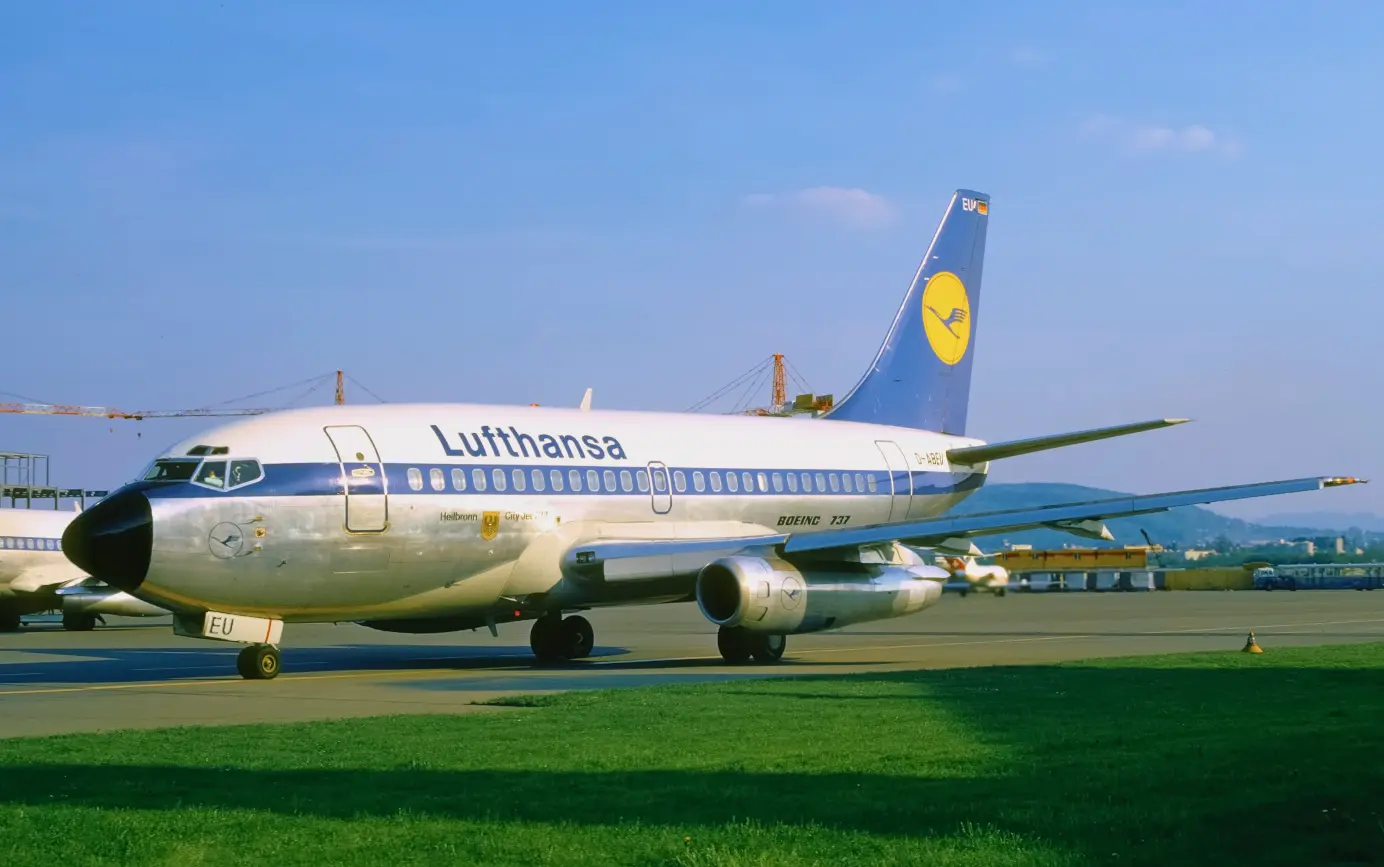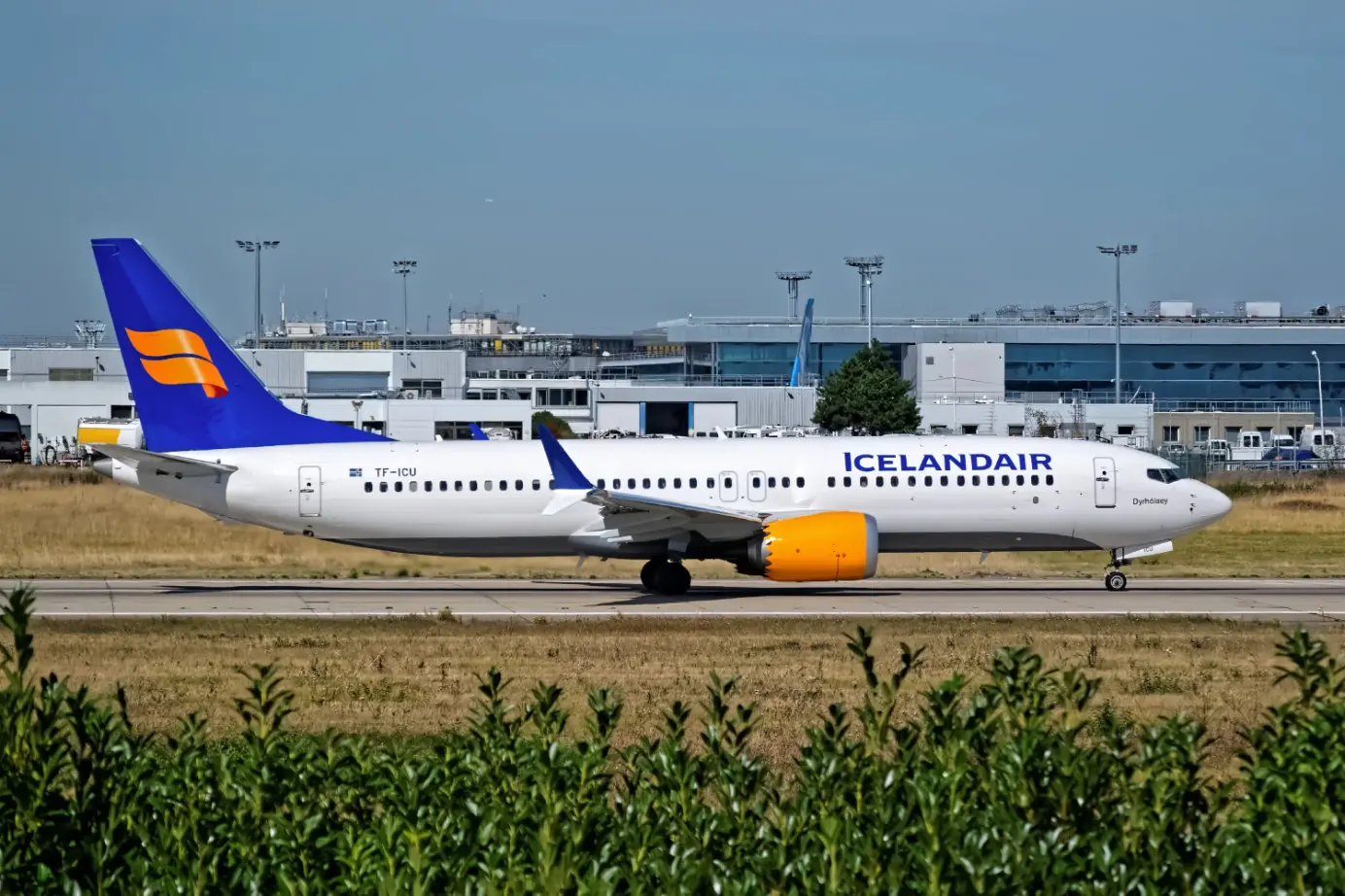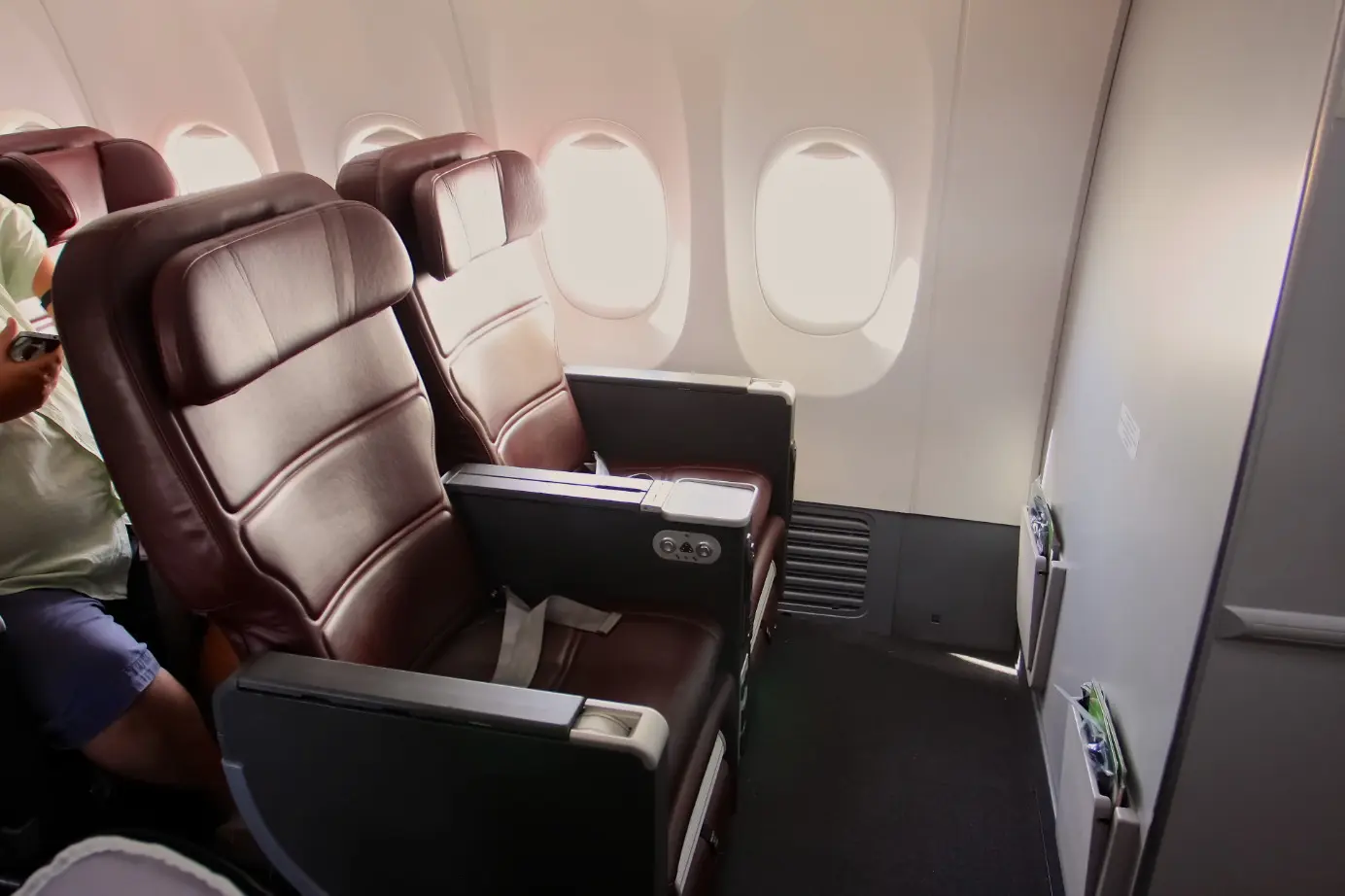
What Is the Passenger Capacity of the Boeing 737?
The passenger capacity of the Boeing 737 varies depending on the variant. Find out how many people each Boeing 737 model can hold.
Table of Contents
The Boeing 737 is among the most popular commercial aircraft. If you travel a lot, there's a high chance that you will have traveled on one of these planes at some point in your life. The Boeing 737 is not one specific aircraft but a family of different models, and their seating capacity varies.
Continue reading to find out the passenger capacity of each Boeing 737 model, plus the variations depending on cabin layout.
What Is The Passenger Capacity Of A Boeing 737?
The passenger capacity of the 737 depends on the specific model. Some models are larger than others, and the seating configuration defines the exact number of seats available. The lowest maximum passenger allowance is 124 for the Boeing 737-100, while the highest is 224 for the Boeing 737 MAX 10.
The exact passenger capacity depends on the chosen configuration of the airline. Still, each aircraft has a maximum certified seating capacity, as listed in the table below.
| Aircraft | Maximum Capacity |
| 737-100 | 124 |
| 737-200 | 136 |
| 737-300 | 149 |
| 737-400 | 188 |
| 737-500 | 140 |
| 737-600 | 149 |
| 737-700 | 149 |
| 737-800 | 189 |
| 737-900 | 189 |
| 737-900ER | 215 |
| 737 MAX 7 | 149 |
| 737 MAX 8 | 189 |
| 737 MAX 9 | 220 |
| 737 MAX 10 | 224 |
Passenger Capacity by Model
One of the driving forces behind the constant evolution of the 737 is for Boeing to provide increased passenger capacity and improve fuel efficiency. This is why seating numbers have generally increased over time (with a few exceptions).
737 Original
The first Boeing 737 model was the -100 - the smallest aircraft variant launched in February 1965. Its cost at the time of production was around US$3.7m, which equates to roughly $28.8m in today's money.
The lowest passenger capacity - as you might expect - is for this original model, the 737-100, which could seat a maximum of 124 passengers and allowed for an MTOW of 44,225 kgs, which is less than half that of the later -900 and MAX models.
However, Boeing quickly realized that airlines wanted a higher passenger capacity, and after the sale of just 30 -100 units, they introduced the -200 model that could seat a maximum of 136 people.

737 Classic
While previous models of the 737 had featured a wingspan of 93ft (28.35 meters), the classic generation now expanded that to almost 95ft (28.88 meters). In addition, the plane's length increased from 93ft (28.35 meters) to over 100ft (up to 119ft / 36.45 meters for the 737-400). These modifications allowed Boeing to increase the seating capacity of the 737.
Thanks to an extended fuselage and the higher-powered engine of the classic 737 models, these planes could seat increasing numbers of passengers. The -300 boasted an overall capacity of 149, while the -400 stretched to 188. The 737 Classic models became quite popular with the airlines, and Boeing built 1,988 737 Classics between 1984 and 2000.
A notable seat reduction was that of the Classic 737-500 model, which almost returned to the length of the Original -200. This was to combine the improvements of the -300 and -400 models with a smaller-sized plane to create a more fuel-efficient option for long-haul journeys.
Designed as a direct replacement for the 737-200, the 737-500 variant possessed a reduced length of 101ft (31 meters) and carried only 140 passengers (less than the -300 and -400 models).
Next Generation
Boeing built the Next Generation 737s on the foundation of the previous variants.
The -600 and -700 were similar in length to the -300 and -500. However, Boeing also developed longer variants, the -800, -900, and -900ER, that could carry more passengers.
The 130ft (39.5 meters) extended Boeing 737-800 increased passenger capacity to 189. A few years later, Boeing introduced the 737-900, a stretched version of the -800, with a 7ft (2.4 meters) longer fuselage. Although the -900 had 9% more floor space in the cabin, the passenger capacity was the same as the -800 because Boeing did not choose to equip the aircraft with more emergency exits. Therefore, the -900 also has a maximum passenger capacity of 189.
The improved version of the -900, the 737-900ER, overcame this problem by adding a pair of doors above the wing for passenger evacuation, increasing the total capacity to 215. The -900ER also had increased range thanks to additional fuel tanks.
MAX
The driving force behind most aircraft developments is to increase passenger capacity for more profitable flights with less fuel burn per passenger. That was also the case with the notorious Boeing 737 MAX.

In general, the MAX 7 seats a maximum of 149, the MAX 8 189, the MAX 9 220, and the MAX 10 224 passengers. But the actual number depends on the configuration chosen by the airline.
Irish low-cost airline Ryanair has ordered a large number of Boeing 737 MAX 8 aircraft and configured them for 200 passengers. In fact, Boeing developed a special version of the MAX 8 for low-cost carriers, which can carry 200 passengers. Boeing calls this high-density version the 737 MAX 200.
Seating Configurations for the Boeing 737
So far, we have only discussed the maximum certified number of passengers allowed in the 737 models. In reality, the number of passengers is often lower than that.
The passenger capacity of a Boeing 737 can vary greatly depending on the airline's chosen configuration. These configurations allow for one, two, or even three passenger classes, with a defined distance between each seat row and varying seat widths.
The standard format in a Boeing 737 is two rows of three seats, leaving an aisle in between. The Boeing 737-800 has a maximum of 189 seats if you utilize this configuration from front to back.
However, if you alter the configuration to accommodate a first-class area, you lower the maximum number of passengers the aircraft can hold, as first-class seats typically are larger for greater comfort. In this configuration, the 737-800 first-class area usually can carry 16 passengers, while the economy-class seating is reduced to 150 spaces, totaling 166 seats.

The exact number of seats on any given Boeing 737 model depends on the airline. Some airlines' configurations are outlined in the table below.
| Airline | Model | Seat Breakdown | Total Passenger Capacity |
| Delta | 737-800 | First class: 16 Business class: 36 Economy: 108 |
160 |
| Southwest | 737-800 | Economy: 175 | 175 |
| Alaska Airlines | 737-800 | First class: 12 Business class: 30 Economy: 117 |
159 |
| American Airlines | 737-800 - Layout 1 | First class: 16 Business class: 30 Economy: 114 |
160 |
| United Airlines | 737-800 - Layout 1 | First class: 16 Business class: 48 Economy: 90 |
154 |
| United Airlines | 737-800 - Layout 2 | First class: 16 Business class: 48 Economy: 102 |
166 |
Final Thoughts
A typical Boeing 737 will have the capacity to hold somewhere between 130 and 160 passengers. Still, these figures can vary wildly depending on the chosen configuration and seating plan selected by the individual airline.
With many models, configurations, and options available, it's challenging to provide an exact answer to the question, what is the passenger capacity of a Boeing 737? Still, some guidelines provide us with a realistic range.
Planenerd Newsletter
Join the newsletter to receive the latest updates in your inbox.






